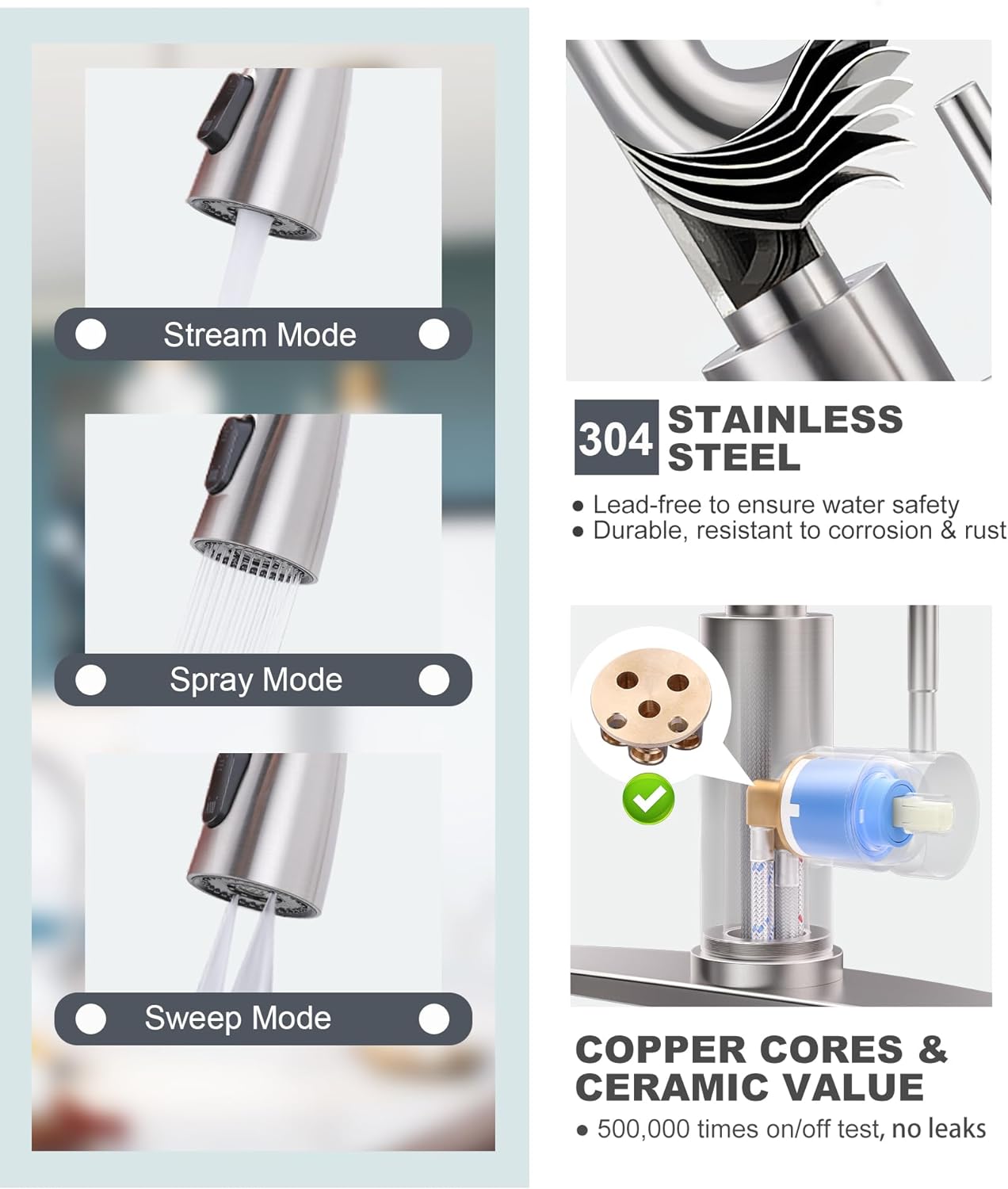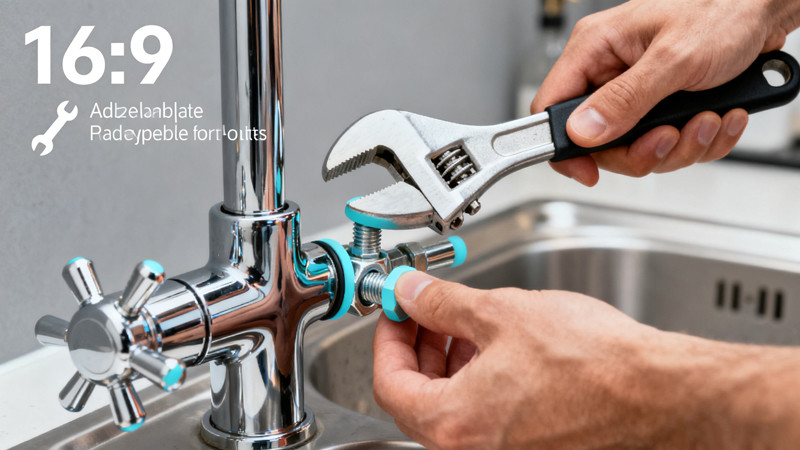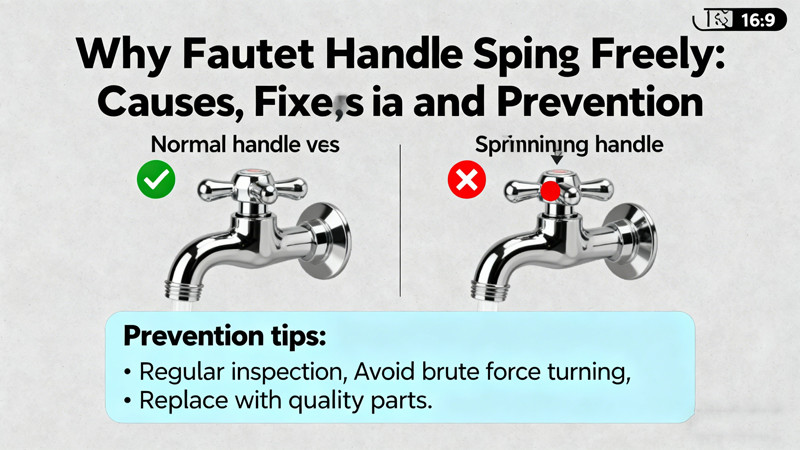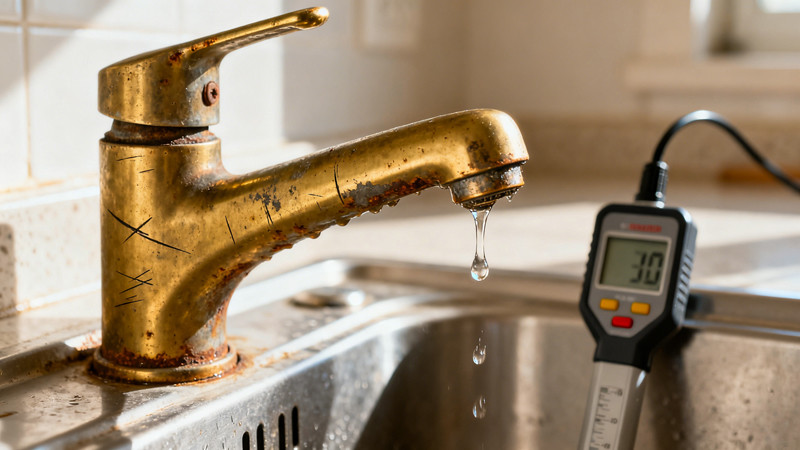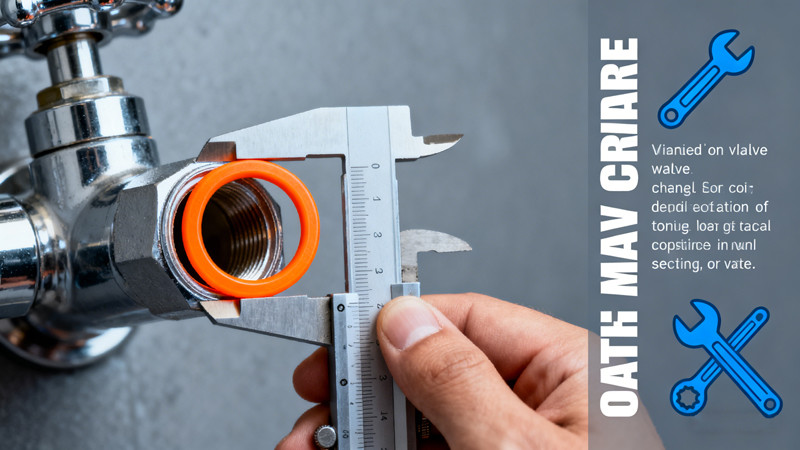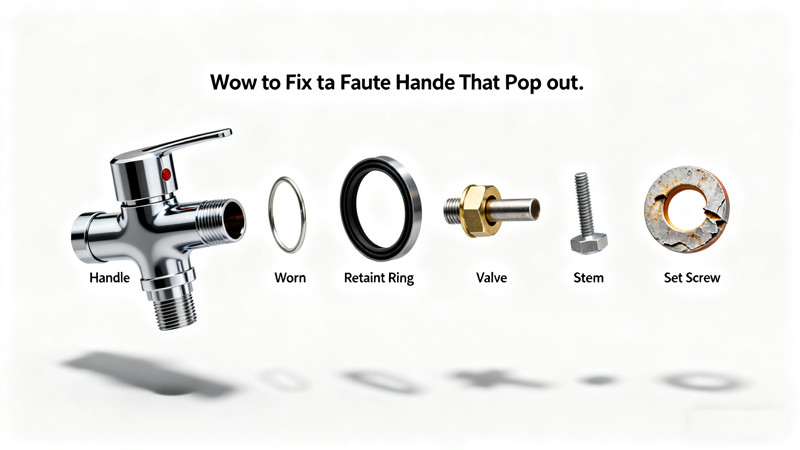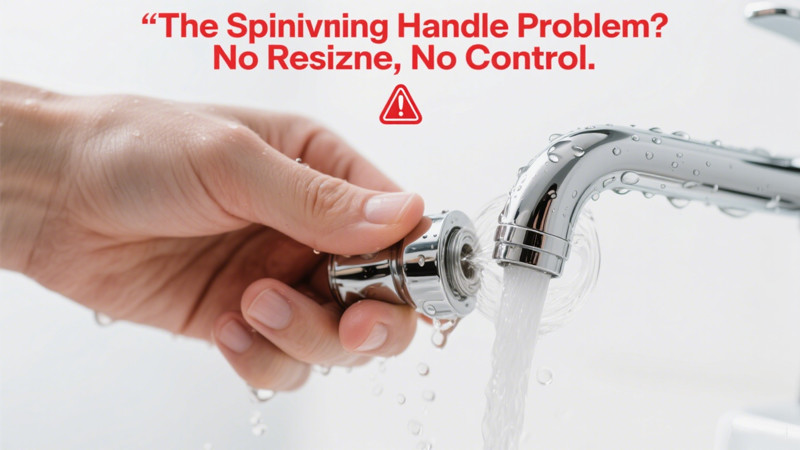
Few household issues are more frustrating than a faucet handle that spins freely without actually turning the water on or off. You twist, twist, and twist again… but nothing happens. Instead of a satisfying stop, the handle just keeps moving in a loose, unproductive circle.
While it’s an inconvenience, this problem is usually straightforward to diagnose and repair — if you know where to look. In this guide, we’ll cover the common causes, step-by-step fixes, and ways to prevent this from happening again.
Understanding the Problem
When a faucet handle spins without resistance, it means the connection between the handle and the internal valve stem (or cartridge) has been compromised.
In a properly functioning faucet:
- The handle is attached securely to a valve stem (or cartridge stem in modern faucets).
- Turning the handle rotates the stem, which opens or closes the water flow inside the faucet body.
- A solid mechanical connection ensures you feel resistance as you turn.
When the connection fails, you’re just turning the handle — not the internal mechanism that controls water flow.
Common Causes of a Spinning Faucet Handle
Several issues can cause this problem. The repair process depends on identifying the right one.
1. Stripped Handle or Stem Splines
Most faucet handles are attached via interlocking ridges called splines. Over time, these splines can wear down or strip entirely, especially if the handle has been forced or overtightened.
Signs:
- Handle turns endlessly without moving the valve.
- Visible wear or smoothness on the connection point.
2. Loose or Missing Set Screw
Some handles are secured by a small set screw (often hidden under a decorative cap). If the screw loosens or falls out, the handle can spin without engaging the stem.
Signs:
- Handle wobbles or lifts off easily.
- A visible screw hole that’s empty.
3. Broken Valve Stem
If the valve stem itself has cracked or broken internally, no amount of tightening will restore control. This usually happens with older faucets or those exposed to high water pressure.
Signs:
- Handle feels completely disconnected.
- No visible wear on the handle itself.
4. Damaged Cartridge
In cartridge-style faucets, the cartridge serves as both the valve and the control interface. A damaged cartridge may fail to rotate with the handle, resulting in a loose, spinning feel.
Signs:
- Water still flows at a fixed rate even when you move the handle.
- No change in temperature or pressure when turning.
5. Incorrect Installation or Missing Parts
If the faucet was recently repaired or replaced, the handle may have been reinstalled incorrectly, or a small washer/adapter piece may be missing.
Tools and Materials You’ll Need
- Allen wrench (for set screws)
- Phillips and flat-head screwdrivers
- Adjustable wrench or channel-lock pliers
- Replacement handle, stem, or cartridge (as needed)
- Plumber’s grease
- Cleaning cloth
Step-by-Step Fix
Step 1: Turn Off the Water Supply
Before doing any work, shut off the water to the faucet. Look under the sink for the shutoff valves and turn them clockwise until they stop.
Step 2: Inspect the Handle Connection
- Look for a small cap on top or side of the handle.
- Pry it off with a flat screwdriver to reveal the set screw.
- Tighten the screw with an Allen wrench.
- If tightening doesn’t help, remove the screw and pull the handle off to inspect the splines.
Step 3: Examine the Splines
If the splines inside the handle or on the stem are worn smooth, you’ll need to replace the damaged part.
- Worn handle splines = replace the handle.
- Worn stem splines = replace the stem or cartridge.
Step 4: Remove and Inspect the Stem or Cartridge
Use your wrench to loosen the retaining nut holding the stem or cartridge in place.
- For cartridge faucets, pull the cartridge straight out.
- For compression faucets, remove the stem by turning it counterclockwise.
Check for cracks, corrosion, or broken parts. If damaged, take it to a hardware store to find an exact match.
Step 5: Install Replacement Parts
- Apply plumber’s grease to the new cartridge or stem for smoother operation.
- Insert it into the faucet body, aligning any tabs or grooves.
- Tighten the retaining nut securely.
Step 6: Reattach the Handle
Slide the handle onto the stem and secure the set screw. Test the resistance before turning the water back on.
Step 7: Turn On Water and Test
Slowly turn the shutoff valves counterclockwise to restore water flow. Test the handle for smooth, controlled operation.
Preventing Future Handle Problems
- Avoid Excessive Force
Overtightening the handle when turning off the faucet puts stress on splines and internal parts. - Tighten Set Screws Periodically
Every few months, check for looseness and retighten as needed. - Address Leaks Quickly
Drips can cause corrosion inside the handle connection. - Clean Mineral Deposits
Hard water can create buildup that wears parts prematurely. A quick vinegar soak for removable parts can help. - Use Quality Parts
Cheap replacement handles and stems often wear faster than OEM parts.
When to Call a Professional
While most spinning-handle problems are DIY-friendly, call a plumber if:
- The faucet is part of an expensive or antique fixture.
- You can’t identify the source of the problem.
- The faucet body itself is cracked.
- Water leaks from inside the faucet even after repairs.
A professional can also upgrade you to a more durable faucet style if yours is prone to repeated failures.
Final Thoughts
A faucet handle that spins without resistance isn’t just annoying — it’s a sign that a small part inside your faucet has failed or loosened. The good news is that most of the time, the fix is inexpensive and can be done in under an hour with basic tools.
By inspecting the handle, stem, and cartridge in a systematic way, you can pinpoint the cause and restore your faucet to full working order. Better yet, by practicing gentle use, keeping parts clean, and checking for looseness periodically, you can prevent the problem from returning.
The next time your faucet handle decides to spin freely like a carnival wheel, you’ll know exactly what to do — and more importantly, how to keep it from happening again.
 WOWOW Faucets
WOWOW Faucets